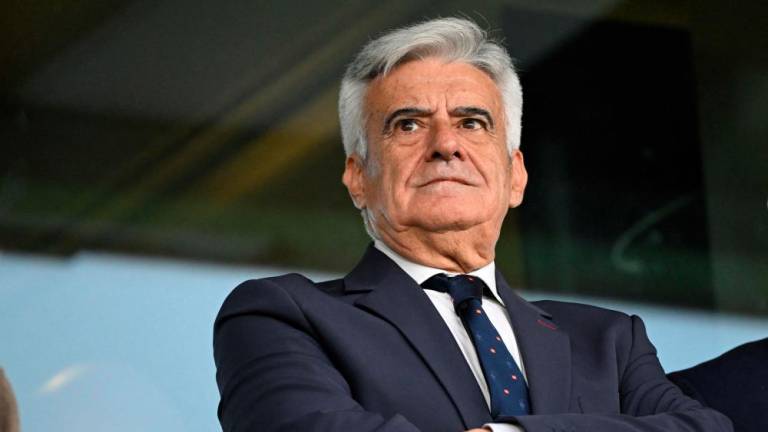INDIA has been the biggest buyer of Malaysian palm oil for the past five years. This single fact makes New Delhi’s recent decision to resume buying the vegetable oil from this country – after a four-month halt beginning in January this year – a welcome development.
For several reasons, decision makers involved in overseeing Malaysia’s palm oil industry and this country’s economy shouldn’t view India’s renewed palm oil purchases as a major game changer.
First, India’s intake of palm oil this year could fall significantly below the 4.4 million tonnes New Delhi imported from this country last year.
Pradeep Choudhary, managing director of Gemini Edibles & Fats India Pvt Ltd, says households in India account for only 40% of demand for palm oil. Worldwide, the biggest buyer of palm oil is the hotel, restaurant and conference (HoReCa) segment, currently pummelled by the lockdown and the suspension of international travel.
There has been a 49% destruction in India’s demand for palm oil this year – mainly led by the HoReCa segment, Choudhary says.
Second, some economists expect India’s economy to shrink by up to 5% during this current fiscal year beginning on April 1, the worst contraction in four decades.
In the January-March quarter this year, India’s economy grew by 3.1%, the slowest pace in eight years, Manoj Kumar writes in a Reuter’s article.
For the current April-June quarter, some private economists predict a downturn of more than 20% in India’s economy. During these three months, the lockdown’s full impact on the manufacturing and services sectors will be more apparent.
Third, 43 analysts surveyed by Reuters suggest Brent oil price could average US$37.58 a barrel this year. Although this is slightly higher than the US$35.84/barrel forecast in the April poll, it is 11.3% lower than the to-date average of US$42.37 a barrel.
Prices of crude palm oil (CPO) and Brent oil have moved in tandem due to the introduction of palm-based biodiesel and the implementation of the Envo Diesel programme in March 2006, a paper published by the Malaysian Palm Oil Board indicates.
A synchronic moment between prices of these two commodities occurred on April 20 and 21. On April 20, US benchmark West Texas Intermediate (WTI) for May delivery sank to minus US$37.63 per barrel, the first time this happened.
Negative WTI prices were prompted by buyers forced to either pay a large cancellation fee to settle their May futures contract due to expire at the close of business the next day or take physical delivery of oil at a time when storage tanks in the US were almost full or already contracted for.
On April 21, CPO’s benchmark July contract fell to RM2,604 by the close, recording its biggest daily loss since mid-January this year, an article in Agricensus says.
Fourth, the US economy contracted by 4.8% in the first quarter this year, the Bureau of Economic Analysis says – steeper than the 3.5% decline estimated by economists surveyed by Dow Jones and the deepest quarterly plunge since the 8.4% tumble in 4Q 2008 during the worst of the global financial crisis.
Because the January-March 2020 quarter captured only a few weeks of the lockdown, US-based investment bank Goldman Sachs estimates the revised 1Q figure could be -8.25%.
Two indicators signal the US is close to a recession.
The US Labour Department says 40 million Americans have applied for jobless benefits in the past 10 weeks – a level not seen since the 1930s Great Depression, a BBC article says.
America’s unemployment rate hit 14.7% in April while the US Labour Department is expected to release this week that the unemployment rate in May this year surged to a high of 20%. In contrast, the unemployment rate touched a 50-year low.
Additionally, consumer spending – accounting for more than two-thirds of US economic activity – plunged for a second successive month in April by 13.6%. The April figure was the biggest drop since the government started tracking the series in 1959 and eclipsed the previous all-time 6.9% tumble in March, a Reuters article said.
In a CBS interview recently, US Federal Reserve chairman Jerome Powell said the US economy could “easily” contract 20%-30% this quarter, although he believed a depression could be avoided.
Fifth, in its latest report, the European Commission predicts “the European Union (EU) economy will experience a recession of historic proportions – a 7.5% contraction this year it forecasts. The EC also warns the risks surrounding its forecast are “exceptionally large and concentrated on the downside.”
Sixth, Japan’s economy – the third-largest in the world after the US and China – shrank by -3.4% in the January-March quarter this year, the second successive quarter of negative growth, fulfilling the technical definition of a recession. Against this backdrop, decision makers in Putrajaya and in corporate suites in this country should be cautiously optimistic and formidably fortified to face the worst.
Opinions expressed in this article are the personal views of the writer and should not be attributed to any organisation she is connected with. Feedback: siokchoo@thesundaily.com











